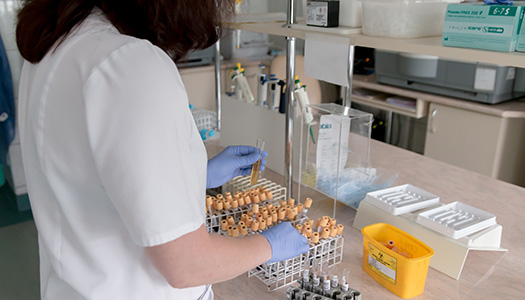What is Dysmenorrhea?
The medical term for menstrual cramps is dysmenorrhea. There are two types of dysmenorrhea, primary and secondary.
In primary dysmenorrhea, there is no underlying gynecologic problem causing the pain. This type of cramping may begin within six months to a year following menarche (the beginning of menstruation), the time when a girl starts having menstrual periods. Menstrual cramps typically do not begin until ovulatory menstrual cycles (when an egg is released from the ovaries) occur, and actual menstrual bleeding usually begins before the onset of ovulation. Therefore, an adolescent girl may not experience dysmenorrhea until months to years following the onset of menstruation.
In secondary dysmenorrhea, some underlying abnormal condition (usually involving a woman’s reproductive system) contributes to the menstrual pain. Secondary dysmenorrhea may be evident at menarche but, more often, the condition develops later.
Causes:
Factors that can cause or heighten primary dysmenorrhea are:
- Excess weight. Overweight women have stronger and more persistent menstrual pain.
- Smoking. Women smokers are 50% more likely to suffer from menstrual pain.
- Alcohol consumption. Alcohol consumption prolongs the duration of pain in women who suffer from dysmenorrhea.
- Sedentary lifestyle and stress. Stress and lack of regular physical exercise increase menstrual pain.
Secondary dysmenorrhea is caused by certain disorders of the female reproductive system. The most common ones are:
- Endometriosis. The tissue lining the uterus, called endometrium, can sometimes reside outside the uterine cavity (ovaries, Fallopian tubes, etc.). The endometrium is responsible for menstruation. Even when present in other nearby areas, endometrial tissue still acts as it does inside the uterus. This means it responds to hormonal changes, breaks apart and bleeds. This is what causes the pain.
- Fibromas. These benign tumors form and grow in the uterus or the ovaries. They cause pain during the menstrual flow.
- Pelvic inflammatory disease (PID). A bacterial infection of the uterus, Fallopian tubes and ovaries.
Symptoms:
The main symptom of dysmenorrhea is pain. It occurs in your lower abdomen during menstruation and may also be felt in your hips, lower back, or thighs. Other symptoms may include nausea, vomiting, diarrhea, lightheadedness, or general achiness.
For most women, the pain usually starts shortly before or during their menstrual period, peaks after 24 hours, and subsides after 2 to 3 days. Sometimes clots or pieces of bloody tissue from the lining of the uterus are expelled from the uterus, causing pain.
Dysmenorrhea pain may be spasmodic (sharp pelvic cramps at the start of menstrual flow) or congestive (deep, dull ache). The symptoms of secondary dysmenorrhea often start sooner in the menstrual cycle than those of primary dysmenorrhea, and usually last longer.






